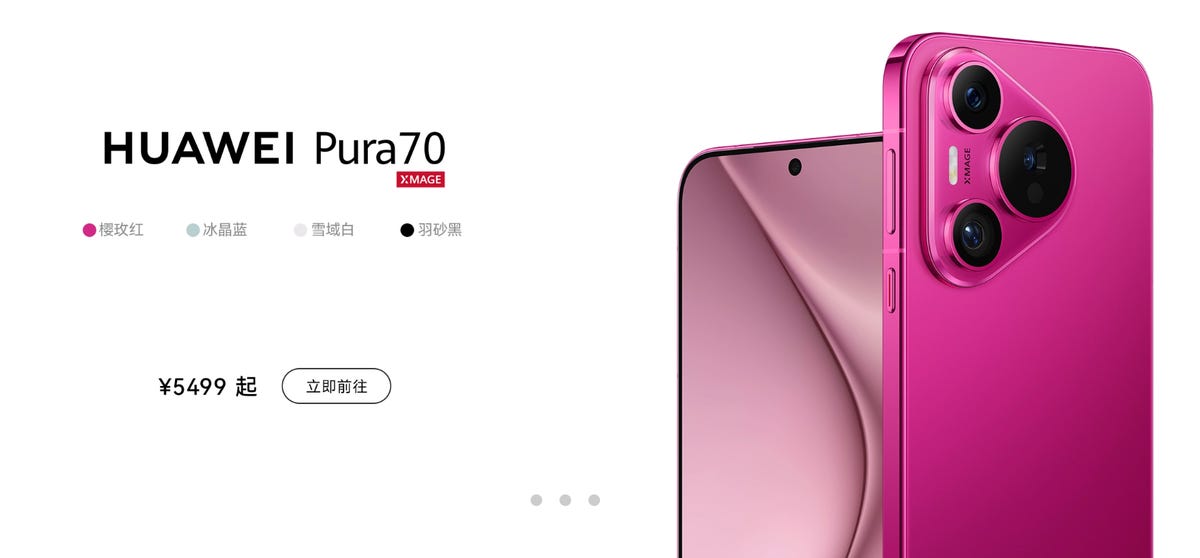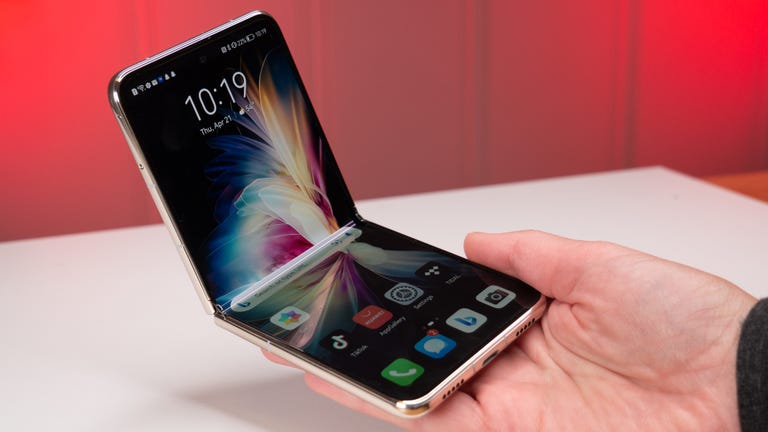
Huawei's phone business has shown signs of recovery, but it's not yet back to where it was before US sanctions.
Huawei's new flagship Pura 70 series has a sleek and stylish design as well as multiple rear cameras. The company launched the new line in China on Thursday, in a bid to revive its smartphone business that has suffered due to US sanctions.
The Pura 70 line appears to be a rebrand of Huawei's P phone series, which were also notable for their rear cameras. The Pura 70 has four models running from 5,499 yuan (roughly $760) for the base Pura 70 all the way up to 9,999 yuan (roughly $1,380) for the 70 Ultra.
Huawei quietly launched its Mate 60 series last year, The Mate 60 runs on the company's in-house Kirin 9000 processor, which enables 5G connectivity. The Kirin 9000 surpassed people's expectations of Chinese chipmakers at the time. It's not clear at the time of writing what processor the Pura 70 or 70 Ultra is using.
Since 2019, Huawei's been grappling with US sanctions that aim to restrict the Chinese company's access to American technology. Huawei eventually lost access to critical global components required to make state-of-the-art processors for its smartphones, among other products. This lead Huawei to release outdated 4G phones such as 2023's Mate X3 at a time when 5G phones had already hit the mainstream.
The base Pura 70 phone comes in hot pink.
Vmall/Screenshot by CNETThe Mate 60 series, launched in August 2023, is credited with driving up Huawei's phone sales. In the first six weeks of 2024, Huawei witnessed a surge in phone sales per unit by 64% compared to the previous year, according to research firm Counterpoint. In that same timeframe, Apple's iPhone sales in China experienced a decline of 24%.
The Pura 70 series appears to be a rebrand from Huawei's high-end P series. It targets people who care about aesthetics and photography, while the Mate series focuses on pixels and processors.
The Pura 70 series runs on HarmonyOS, Huawei's self-developed operating system. It was released in 2019 after US sanctions meant the company's phones lost access to Google Mobile Services, which includes Google Maps, Gmail and the Google Play Store.
Huawei's phone business has shown signs of recovery, but it doesn't seem to be back to where it was before US sanctions. The Shenzen-based company has survived and even grown in some areas. It posted a net profit for the year of 2023 of 87 billion yuan, which rose by 144.5% from the year before. In fact, 2023 represented Huawei's third year straight of revenue growth, but revenue remains below its 2020 peak.
